“Rory received his diagnoses at the end of summer 2018 at nearly 3, thanks to the wonderful genetics team at GOSH. Our story is probably very similar to yours and other SAS families, and so I will only very briefly go into it here.
Rory was born with a cleft of the soft palette, this was not initially detected and so he “failed to thrive” and had to be hospitalised briefly for jaundice at 6 days. Once we established a feeding routine that enabled him to get some sustenance and the cleft was picked up at about 8 weeks, we felt that he had had a bit of a ‘knock’ early on but that he would catch up. It soon became clear to Cleo and I that something else was amiss, we have two older children and Rory’s development just wasn’t the same. It took a while for the clinicians to agree that Rory was anything other than a slow starter and we were not just overanxious parents. Having seen a myriad of different specialists trying to rule in or out various conditions on the basis of Rory’s ‘constellation’ of symptoms, we ended up in front of the cleft geneticist at GOSH genetics team, who both put us in for whole genome sequencing (under the UKs 100k genome project) but also said that she wanted to test one specific gene, Satb2, due to something we mentioned about Rory constant drooling. She told us about Glass syndrome and said it would be statistically unlikely to be this as there were only a couple of hundred confirmed cases globally and this was just to rule this condition out, but she did offer us hope that we would get an answer at some point.
We waited over the summer 2018 for the results whilst researching SAS and saw so many similarities with our child, but we were also looking at the math, with so few cases globally it had to be unlikely for it to be the cause of Rory’s condition.
At the end of the summer once we had the confirmation it was great to be able to engage with the wider satb2 family. We found that we were connected with an Australian SAS family through a mutual friend, it really is a small world. I like that with testing and new diagnosis happening all the time, we will get families with SAS children, well into their 40’s who approach the groups looking for information and answers on their recent diagnosis, without realising that their own expertise having managed their children will provide more help for those of us with younger SAS families. So please remember that with this condition only being first described in medical literature in 1989, we are all new at this and we all learning. Edwin Hodges – June 2020”





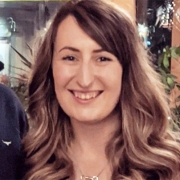
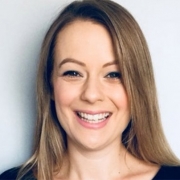
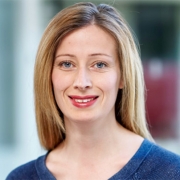
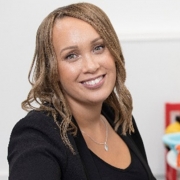
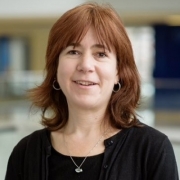 Dr. Jennifer Fish is an Assistant Professor at the University of Massachusetts Lowell (UML), where she teaches Developmental Biology and Comparative Vertebrate Embryology. Prior to arriving at UML, she trained at King’s College London and the University of California San Francisco. Dr. Fish has been researching the roles of SATB2 in development since 2008 using animal models of disease.
Dr. Jennifer Fish is an Assistant Professor at the University of Massachusetts Lowell (UML), where she teaches Developmental Biology and Comparative Vertebrate Embryology. Prior to arriving at UML, she trained at King’s College London and the University of California San Francisco. Dr. Fish has been researching the roles of SATB2 in development since 2008 using animal models of disease.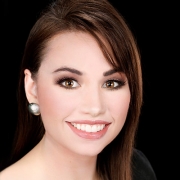 Ashlen Thomason, Ph.D., CCC-SLP, is a member of the outpatient speech pathology team at Arkansas Children’s Hospital. She is a graduate of the Arkansas Consortium for the Ph.D. in Communication Sciences and Disorders with a major research emphasis in stuttering and minor in cleft palate.
Ashlen Thomason, Ph.D., CCC-SLP, is a member of the outpatient speech pathology team at Arkansas Children’s Hospital. She is a graduate of the Arkansas Consortium for the Ph.D. in Communication Sciences and Disorders with a major research emphasis in stuttering and minor in cleft palate.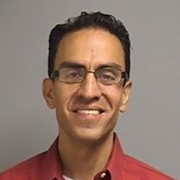 Dr Yuri Zarate is a Clinical Geneticist and an Associate Professor at the University of Arkansas for Medical Sciences and Arkansas Children’s Hospital. In 2014, Dr Zarate started a research project that led to a report with the first cohort of patients with SATB2-associated syndrome (SAS). From there, he established a strong-long lasting relationship with the support group for this rare condition, created the initial dedicated
Dr Yuri Zarate is a Clinical Geneticist and an Associate Professor at the University of Arkansas for Medical Sciences and Arkansas Children’s Hospital. In 2014, Dr Zarate started a research project that led to a report with the first cohort of patients with SATB2-associated syndrome (SAS). From there, he established a strong-long lasting relationship with the support group for this rare condition, created the initial dedicated  Drs. Barber Tinselboer is a physician for people with Intellectual Disabilities (ID). In the Netherlands, this is a medical specialty, created to provide better medical care to people with ID. Her work is comprised mostly of treating the comorbid conditions in people with ID like epilepsy, behavioural issues, psychiatric disorders and additional physical problems. She works at ‘s Heeren Loo in Apeldoorn, an organization that provides care, services and treatment for people with ID. She also has a son with SATB2-associated syndrome.
Drs. Barber Tinselboer is a physician for people with Intellectual Disabilities (ID). In the Netherlands, this is a medical specialty, created to provide better medical care to people with ID. Her work is comprised mostly of treating the comorbid conditions in people with ID like epilepsy, behavioural issues, psychiatric disorders and additional physical problems. She works at ‘s Heeren Loo in Apeldoorn, an organization that provides care, services and treatment for people with ID. She also has a son with SATB2-associated syndrome.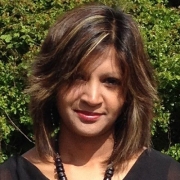 Dr Meena Balasubramanian completed her Paediatric training before undertaking specialist training in Clinical Genetics. Her MD is on atypical presentation of Osteogenesis Imperfecta (OI) obtained in 2012. She has been a Consultant in Clinical Genetics with a specialist bone genetics interest at Sheffield Children’s Hospital since 2012, and provides genetics input to the national OI service. She has led several projects focused on genetics of rare bone disorders and currently pursuing research projects focussed on identifying novel genomic approaches to rare bone disorders and exploring newer targets for therapy for these conditions.
Dr Meena Balasubramanian completed her Paediatric training before undertaking specialist training in Clinical Genetics. Her MD is on atypical presentation of Osteogenesis Imperfecta (OI) obtained in 2012. She has been a Consultant in Clinical Genetics with a specialist bone genetics interest at Sheffield Children’s Hospital since 2012, and provides genetics input to the national OI service. She has led several projects focused on genetics of rare bone disorders and currently pursuing research projects focussed on identifying novel genomic approaches to rare bone disorders and exploring newer targets for therapy for these conditions.